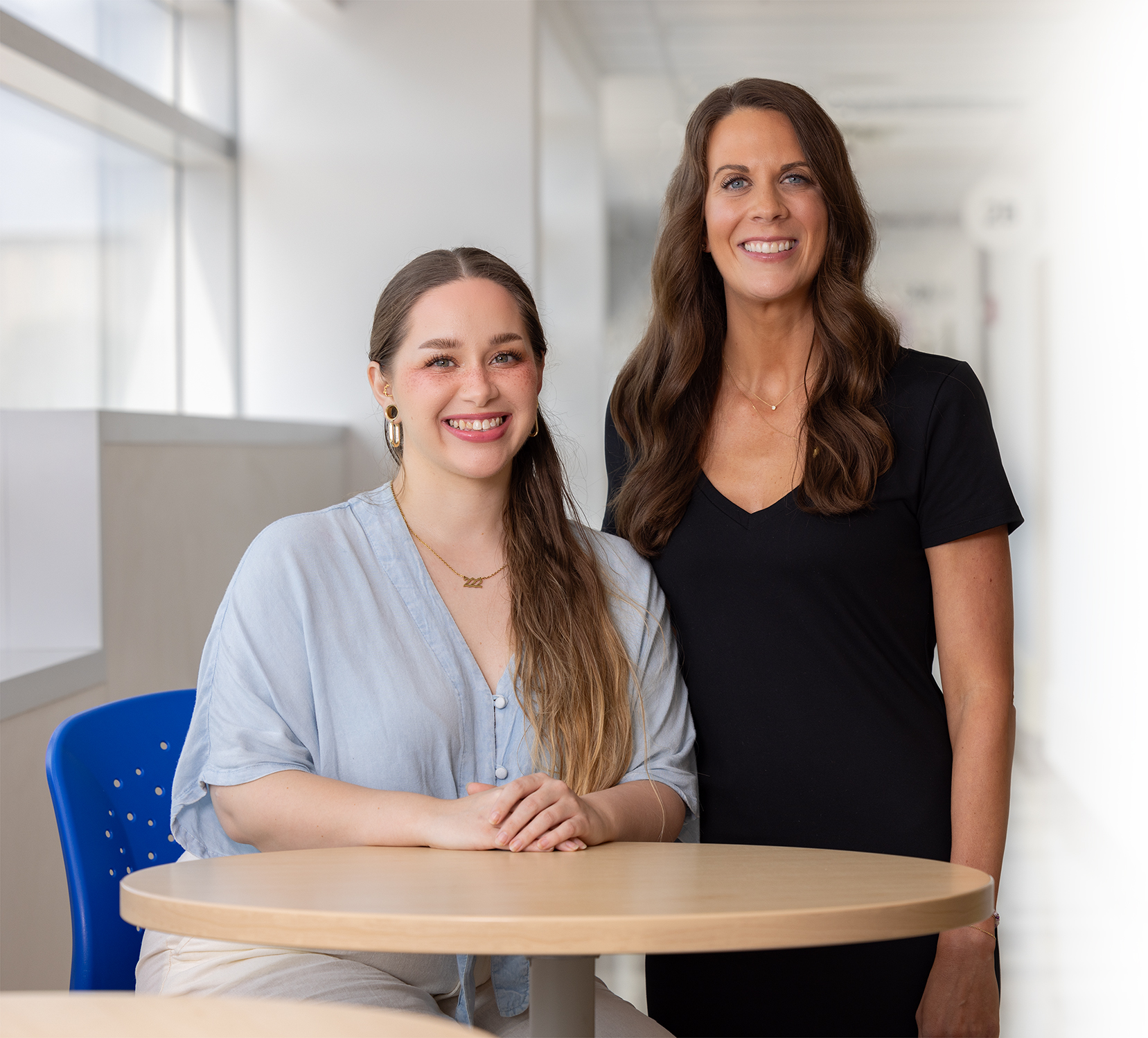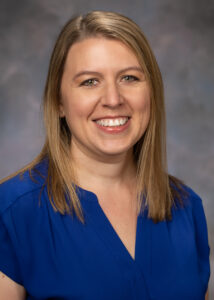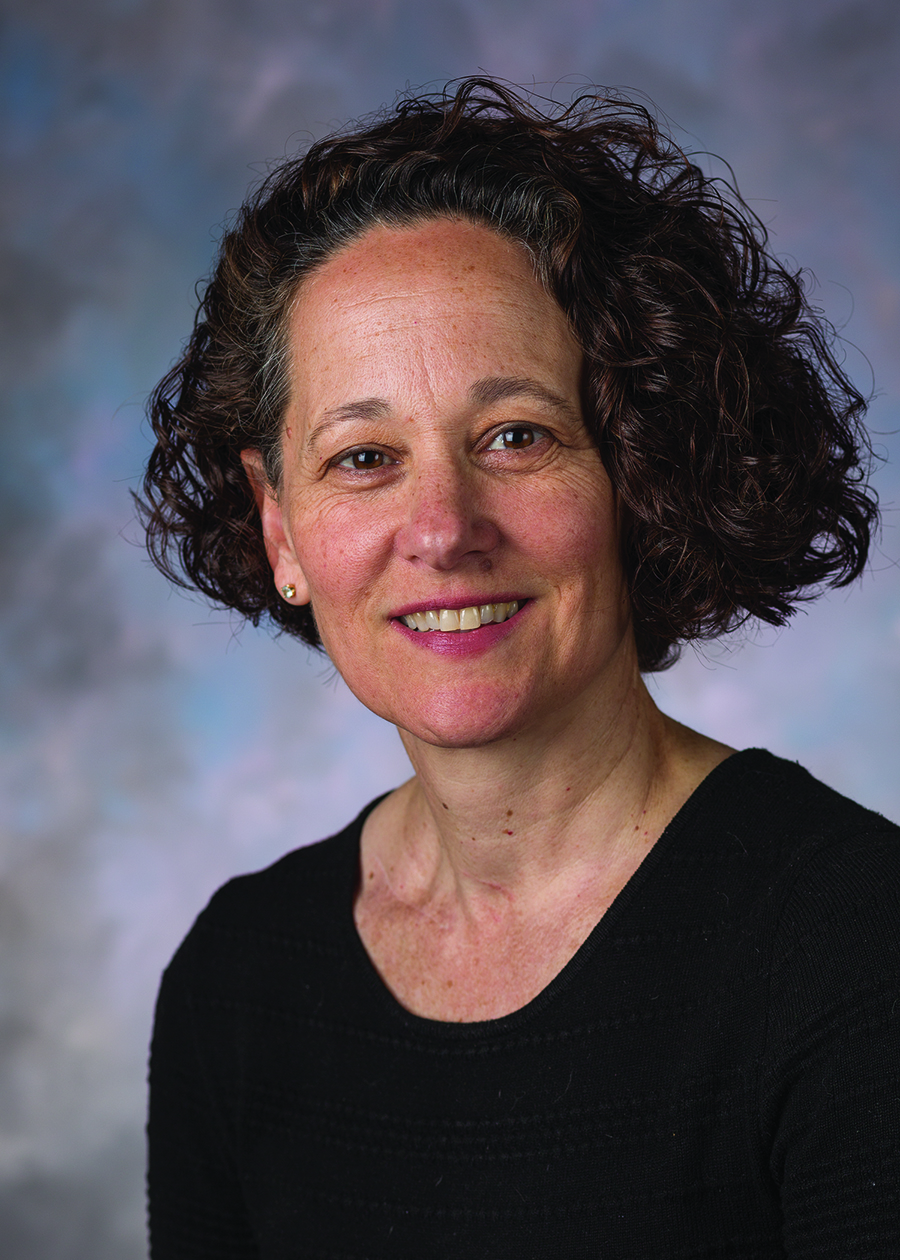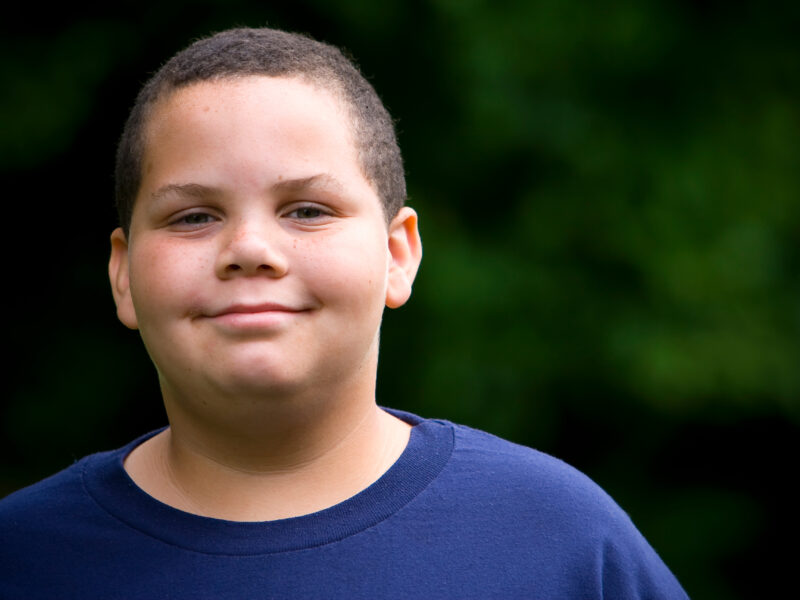Building Hope, Recovery, and Life Beyond Substance Use Disorder
Building Hope, Recovery, and Life Beyond Substance Use Disorder https://pediatricsnationwide.org/wp-content/uploads/2023/10/082423BS0305-1024x702.jpg 1024 702 Abbie Miller Abbie Miller https://pediatricsnationwide.org/wp-content/uploads/2023/05/051023BT016-Abbie-Crop.jpg- October 13, 2023
- Abbie Miller

Five years ago, Pediatrics Nationwide dedicated its fall issue to a comprehensive look at the effects of the opioid crisis on children and families. At that time, Sarah Parker was working hard to stay sober, recovering from the very crisis holding the nation’s attention.
Parker grew up in Chillicothe, Ohio, halfway between Portsmouth, Ohio, the city prominently covered in “Dreamland,” the popular book about the opioid crisis, and Columbus, Ohio, home to Nationwide Children’s Hospital. Experimentation with pills starting at age 12 turned into heroin addiction and an arrest by age 19. But her story does not end there.
Parker is a success story — a beacon for youth and the doctors who care for them. Her story shows what is possible when an adolescent or young adult with substance use disorder gets the support and medical care they need.
The First Steps to Sobriety
“Gradually, then suddenly.”
This is a quote from Ernest Hemingway’s book “The Sun Also Rises” about how a man went bankrupt. For Parker, it’s the way she describes her journey to sobriety.
“As early as age 15 I didn’t feel good or proud about my drug usage,” Parker says. “I felt a lot of shame. I noticed that even though my friends were also using drugs, they weren’t going home and continuing to use like I was.”
In the following years, she moved on to IV heroin use.
“After my first time using a needle, after the drugs wore off, I was embarrassed and disgusted. But I couldn’t cope with not being high,” she explains. “It wasn’t just the physical addiction. I didn’t like myself.”
Eventually, Parker says, she had an epiphany moment that made her get serious about sobriety. Going through detox alone in a jail cell made her realize that her life needed to change. But even that experience wasn’t the answer for the long term.
“I tried to get sober on my own, to quit cold turkey, but I couldn’t do it. I wanted it, but I couldn’t do it on my own,” Parker explains.
It wasn’t until her friend’s mom told her about a program at Nationwide Children’s for teens and young adults with substance use disorder that she got the help she needed.
“When I got to Nationwide Children’s, I felt so relieved,” Parker says. “Th ey were sweet, compassionate, kind and safe. After my first appointment, I was clean for the longest I had been in years.”
Recently, Parker celebrated her 30th birthday. She’s coming up on 11 years sober, and proud of the life she’s made for herself.
“I have good relationships and a good job,” she says. “I’m proud of how far I’ve come. I still have bad days, I still get triggered, but I’ve learned that it’s okay that I’m not fine all the time. We all struggle with different things. I don’t have to be perfect.”
By working with the physicians at Nationwide Children’s, she says she’s learned to be vulnerable, accept compassion and be kinder to herself.

Sarah Parker and her doctor, Erin McKnight, MD
The Changing Landscape of Drugs in the United States
In the years since Parker began her journey of healing, the environment of drugs in the United States has changed.
“We never see heroin in Ohio anymore,” says Erin McKnight, MD, MPH, adolescent medicine and addiction medicine physician, and the medical director of Nationwide Children’s Substance Use Treatment and Recovery Program. “It’s all fentanyl.”
Fentanyl
Fentanyl, a synthetic opioid, is cheaper, 100 times stronger than morphine, and deadly.
“When people are using opioids now, they can pretty much count on getting fentanyl — not oxycodone or heroin — if they are buying it in the illicit market,” says Dr. McKnight. “And this simple fact increases their risk of overdose.”
In fact, fentanyl is so common, it’s often laced into illicit substances where users don’t expect to find them. This has been a significant contributor to the increasing rates of overdose in the United States.
According to Dr. McKnight, over one in four pressed pills purchased online are not from a true prescription. And they are probably laced with fentanyl. Pressed pills look like normal pills, such as Xanax (alprazolam), Percocet (oxycodone/paracetamol), or oxycodone, but they are counterfeit pills made for selling in the trafficking pipeline and are much cheaper.
“When we are counseling patients and families about the risks of drug use, we have to include the fact that benzodiazepines, stimulants (including Adderall (dextroamphetamine-amphetamine)) and even marijuana may be laced with fentanyl,” she says.
Xylazine
Xylazine (also known as Tranq) is a veterinary medication not intended for human use. But it’s cheap and accessible, so it has become increasingly common in the illicit drug supply, particularly on the East Coast. It’s reportedly in 95% of the drug supply in Philadelphia. But it’s been making inroads in Ohio and other Midwestern states.
“Xylazine is being added to fentanyl to ‘give it legs,’ or make it last longer,” says Dr. McKnight. “This complicates overdoses.”
Fentanyl overdose affects respiration. As an opioid, fentanyl responds to naloxone, though it may take more than one dose. Xylazine, however, affects heart rate and blood pressure, and it does not respond to naloxone.
If someone overdoses on what is presumed to be fentanyl, even multiple doses of Narcan (naloxone) might not be enough if the substance was laced with Xylazine. Xylazine leaves the body quickly and is difficult to pick up on a drug test, making its use challenging to confirm and track.
Other substances of concern may seem less scary, but their risks and effects are no less devastating. Alcohol, nicotine and marijuana are high-risk substances for adolescents.
Alcohol
Among youth, binge drinking remains a significant risk to health and well-being. In addition to the risk of physical addiction to alcohol, risks for pregnancy, violence and other harms are increased with binge drinking behaviors.
Nicotine
Nicotine is still one of the most addictive and dangerous substances that youth may use. With the accessibility of vape pens, nicotine use is much easier to hide from parents and providers. It is also much easier to become addicted to nicotine using vapes, says Dr. McKnight.
“With smoking, there’s a slow start to nicotine addiction,” she explains. “You cough, the smoke is caustic, and you get sick. But with vaping, you don’t have that causticness. It’s easier to become addicted much more quickly.”
Long-term effects of nicotine use include a host of cardiovascular problems, but short-term withdrawal is also an important consideration when educating families and teens. Withdrawal can be hard to identify when it comes to nicotine dependency because the moodiness, uncomfortableness and other symptoms mirror other mental health issues common in teens.
Marijuana
Marijuana products today are vastly more potent than in the past. In the 1970s, the amount of THC in marijuana was about 1-4%, says Natalie Powell, LPCC-S, LICDC-CS, clinical manager in the Big Lots Behavioral Health Services at Nationwide Children’s. In the 1990s, THC in marijuana concentrates (oils, waxes, gummies) was about 12%. And now, marijuana concentrates could contain anywhere from 30 to 90% THC.
With the increase in dispensaries, the gummy, candy and other food-like formulations, and increased legalization, marijuana is accessible. Because users aren’t necessarily smoking it, they can also hide their use more easily.
“Marijuana is really confusing for teens,” says Dr. McKnight. “They are getting mixed messages everywhere. They hear that it’s safe and natural, it’s medicine, it’s illegal or legal depending on where you live, and they have it marketed to them all the time.”
The Good News: Substance Use Disorders are Treatable
“The good news is that now we have a lot more tools available for mainstream primary care providers to treat patients who screen positive for substance use disorder,” says Andrea Bonny, MD, section chief of Adolescent Medicine and principal investigator in the Center for Clinical and Translational Research at Nationwide Children’s. “Not that long ago, we didn’t really know what to do to help a kid with a positive screen. We have more options now, and looking forward, there will be even more.”
Medication Treatment
At Nationwide Children’s, the Substance Use Treatment and Recovery Program is housed within Adolescent Medicine.
“We have many more treatments to offer than in the past,” says Dr. McKnight. “Substance use disorder is a chronic disease, but it is treatable. We have so much evidence now that shows that it’s true.”
Medication treatment for substance use disorder received a lot of attention when the opioid crisis took center stage. Using buprenorphine or methadone to treat withdrawal symptoms gives patients with opioid use disorder a chance to engage in their lives while detoxing. The medications can also help them by reducing cravings and blocking the effect of opioids.
“Using medication to help with my cravings and withdrawal was a big part of my success,” says Parker. “They helped so much. I was able to feel in control of my recovery.”
| Medication-Based Treatment Options for Commonly Misused Substances | |||
| Medication | Substance | Delivery | How It Helps |
| Buprenorphine | Opioids | Daily pill | Blocks opioid receptors to lessen withdrawal and prevent users from experiencing a “high.” |
| Methadone | Opioids | Daily pill or oral solution | Blocks opioid receptors to lessen withdrawal and prevent users from experiencing a “high.” |
| Naltrexone | Opioids, alcohol | Daily pill or monthly injection | Blocks reward feelings that come from drinking. Shown to be effective on its own or paired with cognitive behavioral therapy. |
| Nicotine replacement | Nicotine | Combination therapy with long-acting patches and short-acting gum/lozenge/spray | Allows slow reduction of the amount of nicotine used. Prevents withdrawal from a sudden decrease in usage. |
Mental Health and Substance Use
According to experts who treat patients with substance use disorders daily, mental health concerns are almost always part of the equation.
“This patient population is one of my absolute favorites,” says Powell, who has worked with adolescents with substance use disorders and mental health concerns for her entire postgraduate career. “They are looking for a way to feel better. And with the right support and resources, we can help them. And help them avoid the risks associated with illicit substances.”
To help explain why adolescents may turn to illicit substances for mental health concerns, she tells a story about hearing someone describe marijuana as sunglasses for their brain.
Just like adults sometimes use alcohol as a social lubricant, easing the awkwardness of uncomfortable social situations, teens are turning to substances, marijuana especially, to help manage the stresses and pressures they face, says Powell.
But teens and adolescents are not small adults. Alcohol, nicotine, and marijuana have significantly higher risks and more complex consequences for youth.
“Asking someone why they are using illicit substances is a critical part of counseling and recovery. Nearly every young person I talk with who has a problem with substances also has mental health concerns,” Powell says. “To be most effective, you have to address both.”
Asking someone why they are using illicit substances is a critical part to counseling and recovery. Nearly every young person I talk with who has a problem
with substances also has mental health concerns. To be most effective, you have to address both.”
— Natalie Powell, LPCC-S, LICDC-CS, clinical manager, Big Lots Behavioral Health Services at Nationwide Children’s

Screening for Substance Use
“If an adolescent comes out and tells you about their substance use without prompting, it is probably really bad,” Dr. McKnight says. “We need to be asking questions, building trusting relationships and proactively engaging with these patients.”
So, the Division of Adolescent Medicine at Nationwide Children’s implemented standardized screening that was given routinely with depression screening.
“We recommend screening for substance use routinely like we do for anxiety and depression,” says Dr. Bonny. “Nicotine use may start as early as 9 or 10 years old. We see other substances take off as early as 12.”
Screening in this case is as simple as a 5-minute questionnaire that can be filled out by the teen digitally.
“One of the questions we get asked is ‘how do we know what ‘normal’ experimentation is, and what is possible substance use disorder?’” says Dr. Bonny. “While no experimentation is considered safe, we have a five-question survey that helps us identify which youth are most at risk.”
This survey, the CRAFFT questionnaire, doesn’t diagnose substance use disorders, but flags patients who may need a formal referral or additional counseling. If a patient answers “yes” to two or more of the questions in the CRAFFT, they are considered high risk. CRAFFT has been validated for youth aged 12 to 21 and is recommended by the American Academy of Pediatrics.
Following screening, the physician has a clear idea of what counseling and potential referrals are needed.
CRAFFT*
The CRAFFT questionnaire doesn’t diagnose substance use disorders, but helps to identify patients who may need a formal referral or additional counseling. If a patient answers “yes” to two or more questions, they are considered high risk.
Car – have you ever driven under the influence of substances or ridden with someone who was?
Relax – do you ever use substances to help you relax, feel better about yourself or fit in?
Alone – do you use substances when you are alone (vs. with friends or at parties)?
Forget – have you ever forgotten what things you did while you were under the influence?
Friends/Family – do your friends or family ever suggest you should cut down on drinking or drug use?
Trouble – Have you ever gotten into trouble while you were using drugs or alcohol?
*Paraphrased from the CRAFFT questionnaire, available at CRAFFT.org.
When it comes to treating adolescents with a family history of substance use disorder, we need to normalize it like every other illness. There’s great power in destigmatization…”
— Andrea Bonny, MD, section chief of Adolescent Medicine

While it is not part of the CRAFFT, Drs. Bonny and McKnight stress the importance of also asking about family history of substance use disorder.
“When it comes to treating adolescents with a family history of substance use disorder, we need to normalize it like every other illness,” says Dr. Bonny. “There is great power in destigmatization of substance use disorder and treating it as a chronic and relapsing brain disease. We are at the forefront of changing people’s minds.”
Parker agrees.
“Looking back, I can see that I had a predisposition for addiction. If I had known more about addiction and genetic risk, I might have been more cautious,” she says. “But no one talked about it. By the time the adults in my life said, ‘you’re partying too much,’ it was too late. I was already deep in addiction.”
3 Essentials of Substance Use Prevention in Primary Care
1. Start screening all patients at age 9.
2. Start anticipatory education early and focus on nicotine and marijuana.
3. Keep pamphlets or educational materials in the office where families see them.
The Therapeutic Alliance
Screening for substance use in primary care is the beginning of the conversation. And with parents, many times the conversation includes whether or not to conduct drug testing.
“If a provider is going to do urine drug testing, it’s important to discuss beforehand how that information will be used, and how it will help in recovery, as often a good social history focusing on substance use will give enough information,” says Dr. McKnight. “It is important to have the adolescent assent to urine drug testing. We don’t want to use a positive drug test as a ‘gotcha’ moment.”
For treatment to work best, the relationship between provider and patient should be one of trust and shared goals. When parents are part of this therapeutic alliance, best outcomes can be achieved.
“We encourage patients to be honest and open with their caregivers and families,” says Dr. Bonny. “That’s very difficult for some, but most families are supportive and want their child to thrive. It’s important that everyone know that recovery is a journey, and oftentimes relationships are a huge part of that.”
The therapeutic alliance of patient, provider and caregiver is a powerful one. If the caregivers aren’t part of that, patients can still be successful. But so much more can be gained when everyone is working together.
This article appeared in the Fall/Winter 2023 issue. Download the full issue.
Image credits: Nationwide Children’s
About the author
Abbie (Roth) Miller, MWC, is a passionate communicator of science. As the manager, medical and science content, at Nationwide Children’s Hospital, she shares stories about innovative research and discovery with audiences ranging from parents to preeminent researchers and leaders. Before coming to Nationwide Children’s, Abbie used her communication skills to engage audiences with a wide variety of science topics. She is a Medical Writer Certified®, credentialed by the American Medical Writers Association.
-
Abbie Millerhttps://pediatricsnationwide.org/author/abbie-miller/
-
Abbie Millerhttps://pediatricsnationwide.org/author/abbie-miller/
-
Abbie Millerhttps://pediatricsnationwide.org/author/abbie-miller/
-
Abbie Millerhttps://pediatricsnationwide.org/author/abbie-miller/
- Posted In:
- Clinical Updates
- Features
- Patient Story







